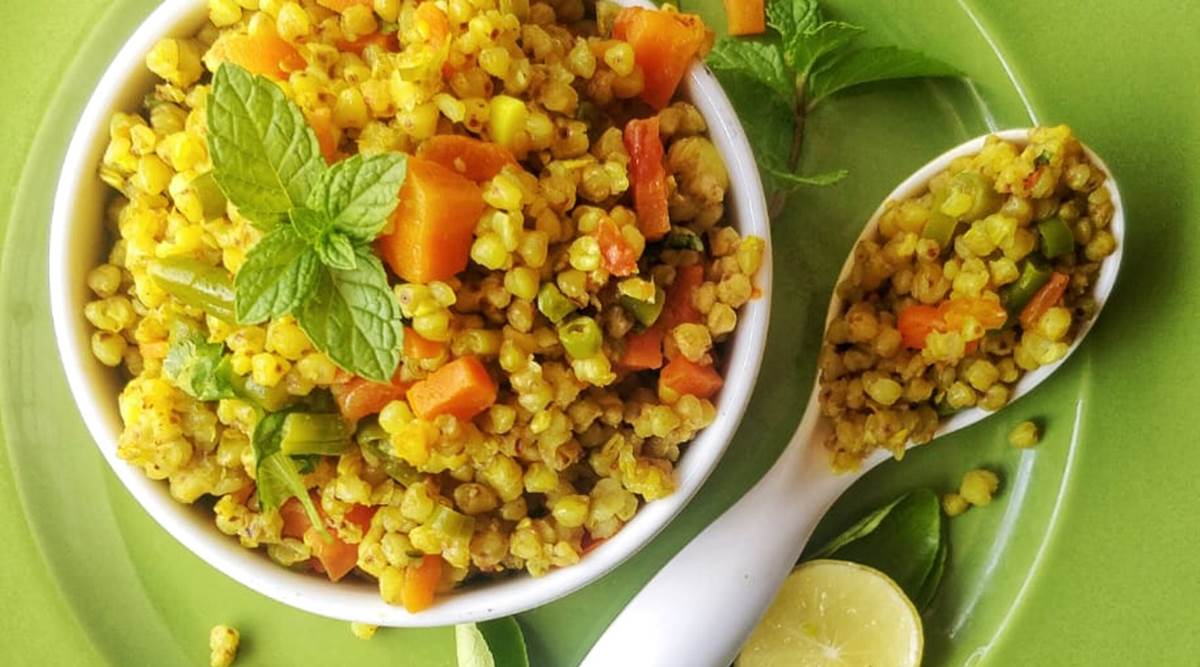 With veggies of your choice and a hint of lemon and garlic, this becomes a complete treat in itself. (Photo by Shalini Rajani)
With veggies of your choice and a hint of lemon and garlic, this becomes a complete treat in itself. (Photo by Shalini Rajani)I am often asked if buckwheat is a millet, and why I love to add it to my recipes and even to my gluten-free vegan breads.
Buckwheat, like amaranth and quinoa, is a pseudo cereal. Which means it has all the nutritional and cooking properties of a grain, but it is actually a seed. It is gluten-free, packed with nutrition, low Glycemic Index as compared to wheat and rice, and to sum it all up, can be easily used just like any millet.
Four years ago, when I started my journey with millet, I had the least knowledge to begin with. Just because millet are environment-friendly, gluten-free and are high on nutrition, I wanted to include them in my recipes. Needless to say, the journey so far has been incredible and today, I am able to cook and differentiate between all possible grains and seeds.
This year when I have taken my millet workshops online, I am meeting some of the most amazing people. Through my WhatsApp groups, I have been able to form an ecosystem of like-minded friends who are learning and moving together. With amazing food pictures that keep pouring from all corners of the world, the recipe trials, some failures and some incredible improvisations, we are all learning and exploring newer possibilities with these wonder grains each day. It has been one of the most satisfying journeys for me so far. For it is bringing so many people closer to millet.
If you, too, wish to start this beautiful millet journey with me, you can reach out to me on my Instagram profile where I have been sharing a lot of millet recipes and have been answering a lot of frequently-asked-questions about millet.
Coming back to the pseudo cereal buckwheat, today’s recipe is an attempt to tell you that there are endless possibilities with these beautiful groats. If you have been using buckwheat as just flour and that too only during fasts, you must consider sourcing whole groats and trying this simple scrumptious salad. With veggies of your choice and a hint of lemon and garlic, this becomes a complete treat in itself.
Read more for the step by step recipe and health benefits of buckwheat.
Ingredients (serves 4)
- 1/2 cup buckwheat groats washed and soaked for 6 hours
- 1.5 cup water
- ½ tsp turmeric
- Rock salt to taste
- 2 fresh lemon leaves
- ½ cup finely chopped carrot
- ½ cup finely chopped beans
- 2 cloves garlic grated
- 1 tbsp extra virgin olive oil
- A generous pinch of white pepper powder
- Fresh mint leaves to garnish
 You can improvise with lot many veggies like broccoli, mushrooms, beetroot and even sweet corns. (Photo by Shalini Rajani)
You can improvise with lot many veggies like broccoli, mushrooms, beetroot and even sweet corns. (Photo by Shalini Rajani)
ALSO READ | Keep it simple with red jowar upma
Method:
- Rinse the soaked buckwheat groats. Take a deep pan, add water and bring it to a boil. Add salt and turmeric followed by rinsed buckwheat groats.
- Reduce the heat to low-medium and simmer for a further 8-10 minutes. You can allow it to boil for a little longer, just in case you wish the buckwheat to be a little tender. Once done, drain the excess water and keep it aside.
- To start with the seasoning, in a deep wok, pour 1 tbsp extra virgin olive oil. Add grated garlic and lemon leaves. Remove lemon leaves once they release the aroma. Now add finely-chopped beans and carrots. Add salt and allow it to cook covered for 5-7 minutes.
- Add white pepper powder followed by boiled buckwheat groats.
- Check for salt and pepper. Add if required. You can drizzle a little more extra virgin olive oil here. Add a few drops of lemon juice.
- Garnish with fresh mint leaves.
- Serve warm.
Please note you can improvise with lot many veggies like broccoli, mushrooms, beetroot and even sweet corns.
Health benefits of buckwheat
Buckwheat is gluten-free, a good source of fiber, and rich in minerals and various plant compounds, especially rutin which has powerful antioxidant properties. As a result, moderate consumption of buckwheat is linked to several health benefits, including improved blood sugar control, better immunity and better heart health.
Please note that high consumption of buckwheat is not advisable as it may lead to fagopyrism which may include some allergies.
(Shalini Rajani is the founder of Crazy Kadchi and holds innovative Millets Cooking Workshops for all age groups)